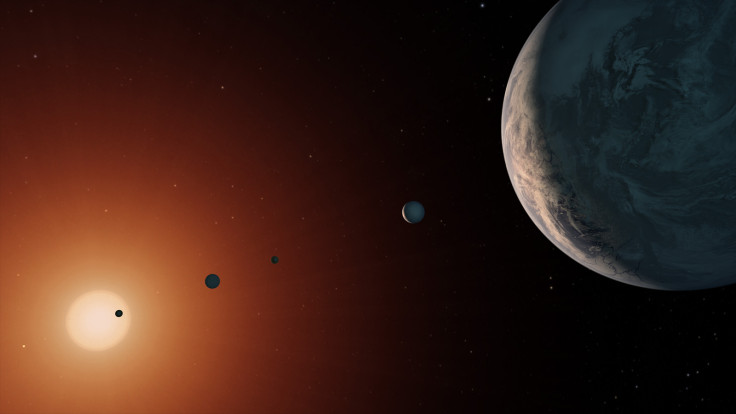Can Trappist-1 host alien life? Two planets of the distant solar system might support atmospheres
Outermost planets in the system may host atmospheres on a billion-year timescale, a new study says.

Two of the seven Earth-sized rocky planets revolving around Trappist-1 red dwarf star may cling on to their atmospheres, which is a crucial condition to host alien life, a new study has suggested.
Located some 40 light years away in constellation Aquarius, the Trappist solar system has been a critical point of study in the search of life-supporting exoplanets. In fact, three of the seven planets revolving around the red dwarf — Trappist-1e, 1f, and 1g — are in the so-called habitable zone, which means they are just at the right distance from their host star to host liquid water, reported Popular Mechanics.
However, over the years, researchers have also expressed concerns about the volatility of Trappist-1.
The red dwarf is so active that its eruptions and solar-flares could easily wreak havoc on these distant worlds, not to mention strip away their atmospheres – the critical gas blanket that protects a planet from dangerous stellar radiation and makes up one of the essential elements for hosting life.
Strong stellar winds, blast of charged particles travelling at about 1,000 miles per second, are capable of destroying planetary atmospheres within millions of miles. The same is also believed to have destroyed Mars' chances at hosting life, according to a report in Forbes.
However, the new study, published in journal PNAS, suggests that despite all odds, the planets in the system might cling on to their atmospheres. Crucially, the outermost planets in the system –Trappist-1g and 1h – have the best odds and may host atmospheres on a billion-year timescale. Since Trappist-1g is already in the habitable zone, its chances of hosting alien life go even up.
"The presence of an atmosphere over sufficiently long timescales is widely perceived as one of the most prominent criteria associated with planetary surface habitability," the study says.
The scientists got to this study after preparing analytical models to study the stellar wind produced by Trappist-1 and its effect on the seven planets. However, they say "in light of the many unknowns and assumptions involved, we recommend that these conclusions must be interpreted with due caution."





















